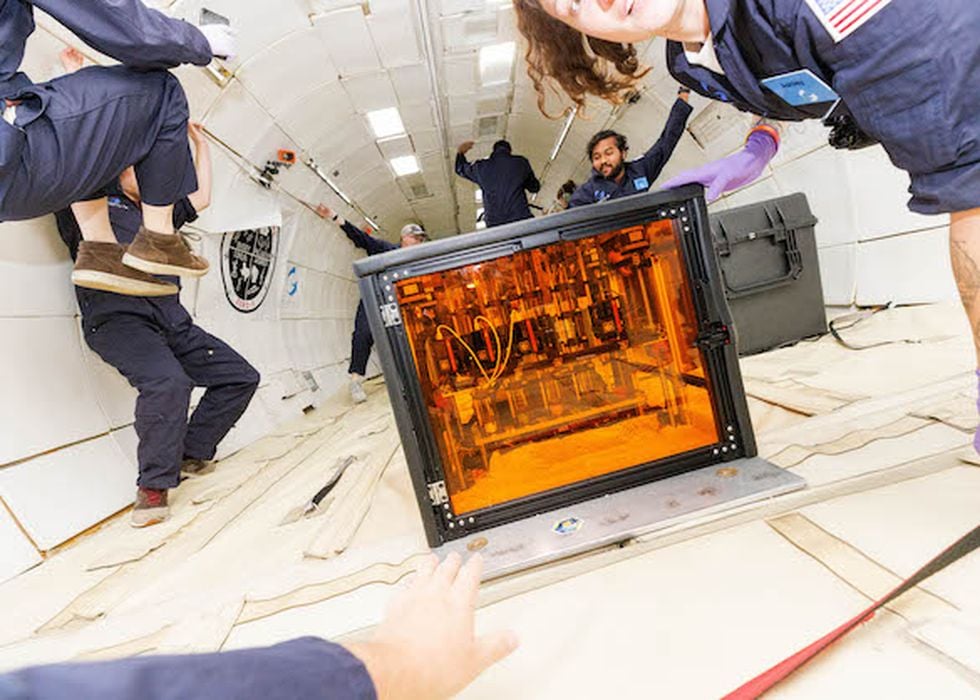
An interesting reveal at NASA: they been testing a volumetric 3D printer in a weightless environment.
Volumetric 3D printing is one of the most amazing 3D printing processes yet developed. Instead of producing objects layer by layer, it instead forms the entire object at once. This is accomplished by projecting light into a rotating transparent resin vat. Eventually the light projections provide sufficient energy at all points in 3D space that must be solidified.
I say “eventually” only lightly. The truth is that volumetric 3D printing processes are extraordinarily fast. Instead of prints taking hours, they take only minutes or even seconds. I personally watched a Xolo device print an object for us in only a moment, and it’s quite startling.
Volumetric 3D printing is by far the most intriguing technological development, and perhaps in the future it will be developed to become a standard approach.
NASA, meanwhile, has been intensely interested in 3D print technology. This is because there is the tremendous opportunity to 3D print objects in space, rather than bringing them up on very expensive rockets.
To that end, the space agency has been testing a variety of 3D print technologies on the international space station, including FFF and DED technologies. These have so far proven quite successful.
But what about volumetric processes?
It turns out that NASA actually has been doing some research on this technology, although it has not yet been dispatched to the ISS.
NASA’s Flight Opportunities website provides a massive list of (as of this writing) 359 different technologies that they are evaluating. From these, presumably, candidates would be drawn later for actual missions to the ISS.
One of the experiments is “Evaluation of Computed Axial Lithography for rapid, volumetric additive manufacturing under low-gravity conditions”, from University of California Berkeley researcher Hayden Taylor.
According to the listing, this experiment was selected by NASA in 2020, with flight readiness in late 2021. Since then the experiment has undergone three parabolic flights that simulate weightlessness for brief periods.
Wait, you’re thinking how could a 3D printer complete a job in only a couple of minutes? That’s not a problem for a volumetric 3D printer, which can get the job done extremely quickly.
However, there are other problems. Previous 3D print technologies used on the ISS were impervious to weightlessness: they did not require gravity.
SLS, SLA, MSLA and other 3D print processes absolutely require gravity to keep their materials in line during print jobs.
This is why this experiment is so interesting, as it must use resin in a weightless state. Would the resin bobble around, messing up the print? My suspicion is that the resin would be contained within sealed glass vials without any air. This would prevent bubbles.
However, it would not prevent sloshing, if the printer were moved or jostled. That, I suspect, would be one of the key aspects of this experiment.
The project involved custom construction of three volumetric 3D printers of 30kg weight each. These would be installed on the B727 “vomit comet” aircraft, and undergo weightless testing.
I was unable to find any results of this experiment, so it may be that it is still underway.
Via NASA (Hat tip to Tuan)
